The day draws nearer that I will have to come up with the solution, or better, a decision, for which engine might be used in my new boat. Up until now I was utilizing an all-electric boat with GEKKO and that is certainly en vogue right now. In this, the discussion about internal combustion engines, so-called “green” propulsion solutions and the heavily politicized controversy (especially here in Germany) around the Diesel engine, makes it a bit of a delicate matter.
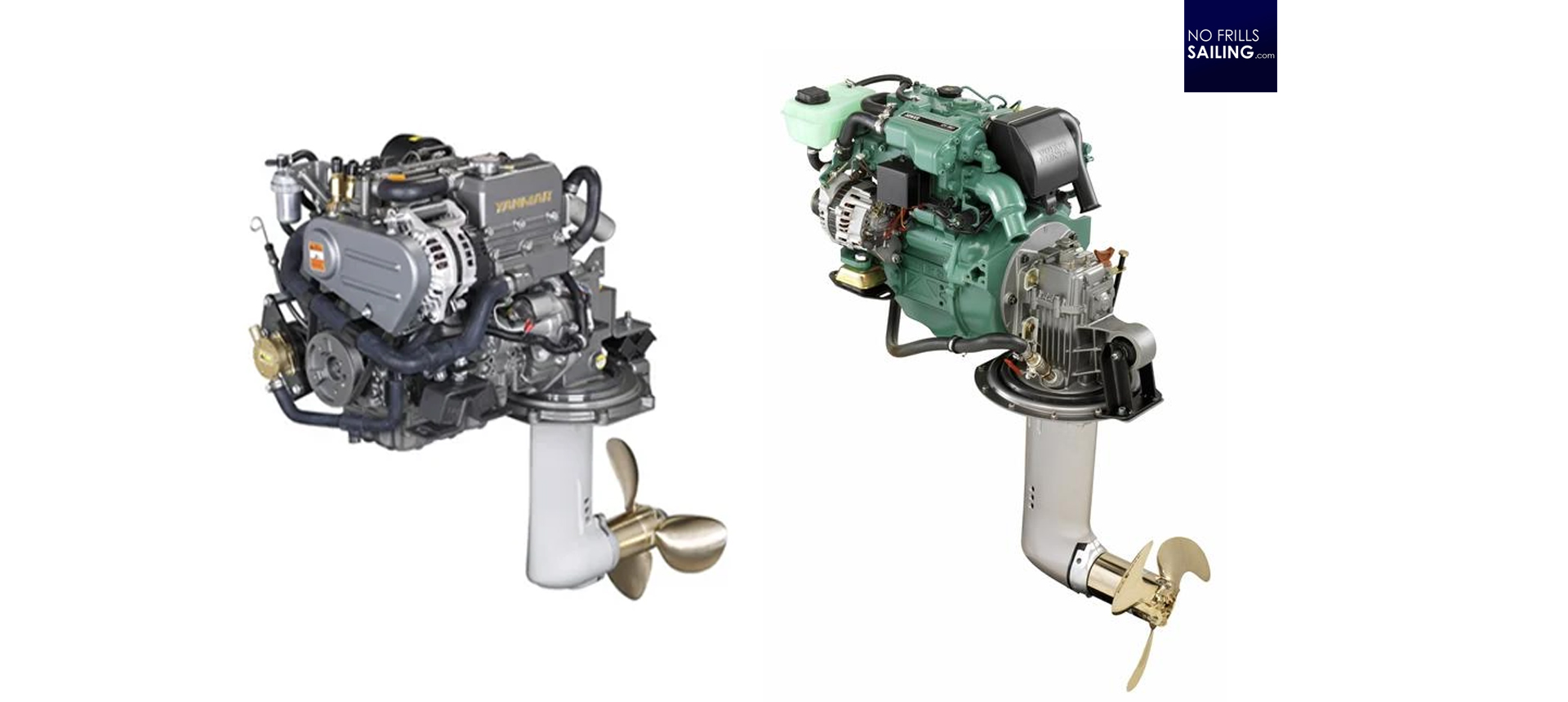
Well, not for me. First of all, the Omega 42 has a CE certification for a Diesel engine and a Diesel engine only. Fitting it with an electric propulsion would mean a completely new certification process and this is not what I want, neither the yard. Secondly, and most importantly, I´m done for now with electric propulsion, at least for serious offshore use: Too faulty (still), no real range, no safety margin, no chance whatsoever to repair things and I don´t like blue screens. The good old Diesel is running by a push of a button since 200 years no, very reliable, strong and economical. But, which one do I choose, Yanmar or Volvo-Penta?
My personal experience with both products
At first I must say that there are of course other brands available, not just those two big players: Nanni, Vetus or even more brands like Beta Marine or Craftsman. Those brands, for me personally, I won´t choose as I do not have any experience of them and out of all the sailing friends and acquaintances I have, only one single friend owns a Nanni Diesel. So, 100 per cent of boats I´ve sailed so far had a Volvo-Penta or a Yanmar.
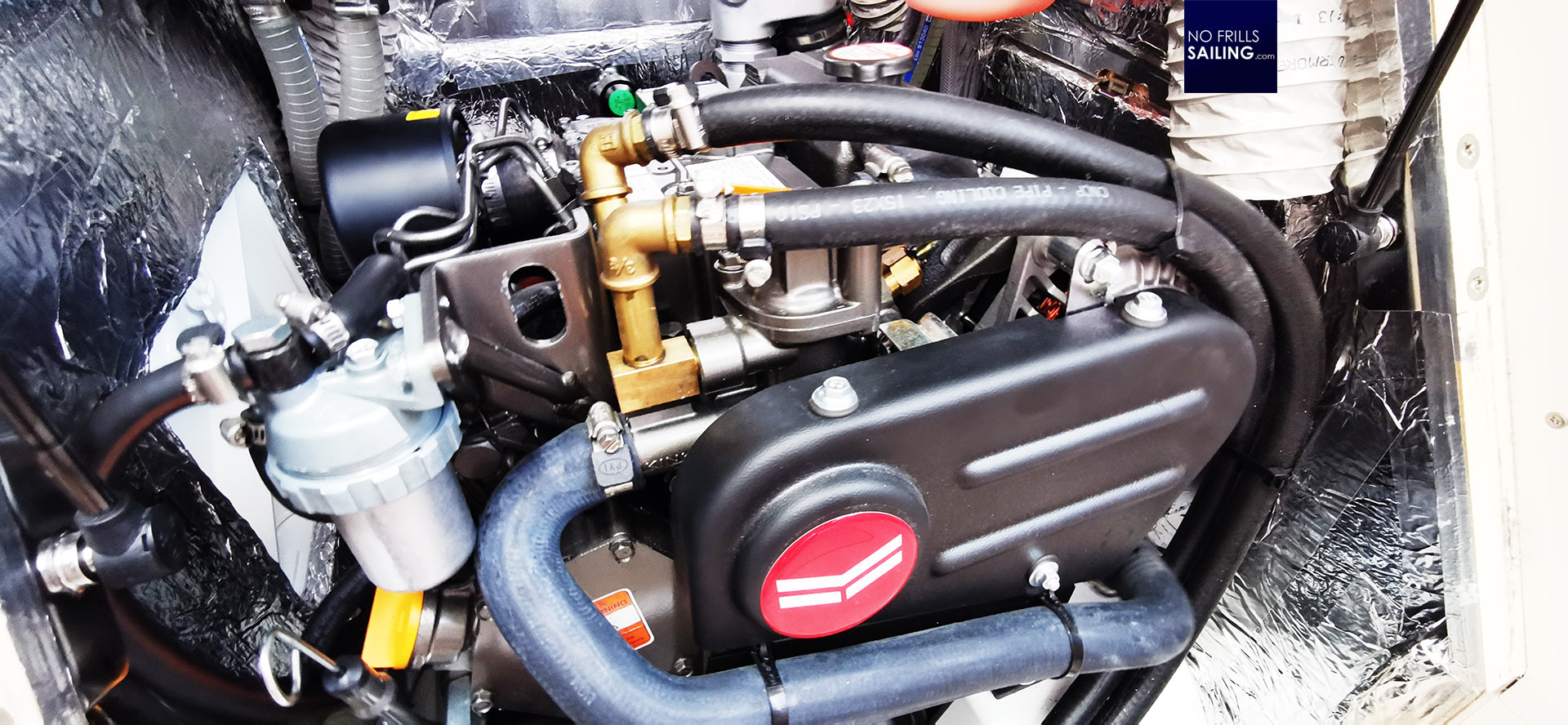
As for Yanmar, these engines are utilized in the Beneteau boats I am sailing all the time. As a dealer of this French brand, I have a pretty wide range of experience with Yanmar. I find they are kind of smooth when running, very, very economical and looking at the data sheets, these engines are a bit lighter all in all than Volvo-Penta. I also like the fact that their drivetrain is encapsulated, adding a bit of safety. For my Omega 42, the Yanmar 3M30C engine with 29 horsepower and sail drive would be the engine of choice.
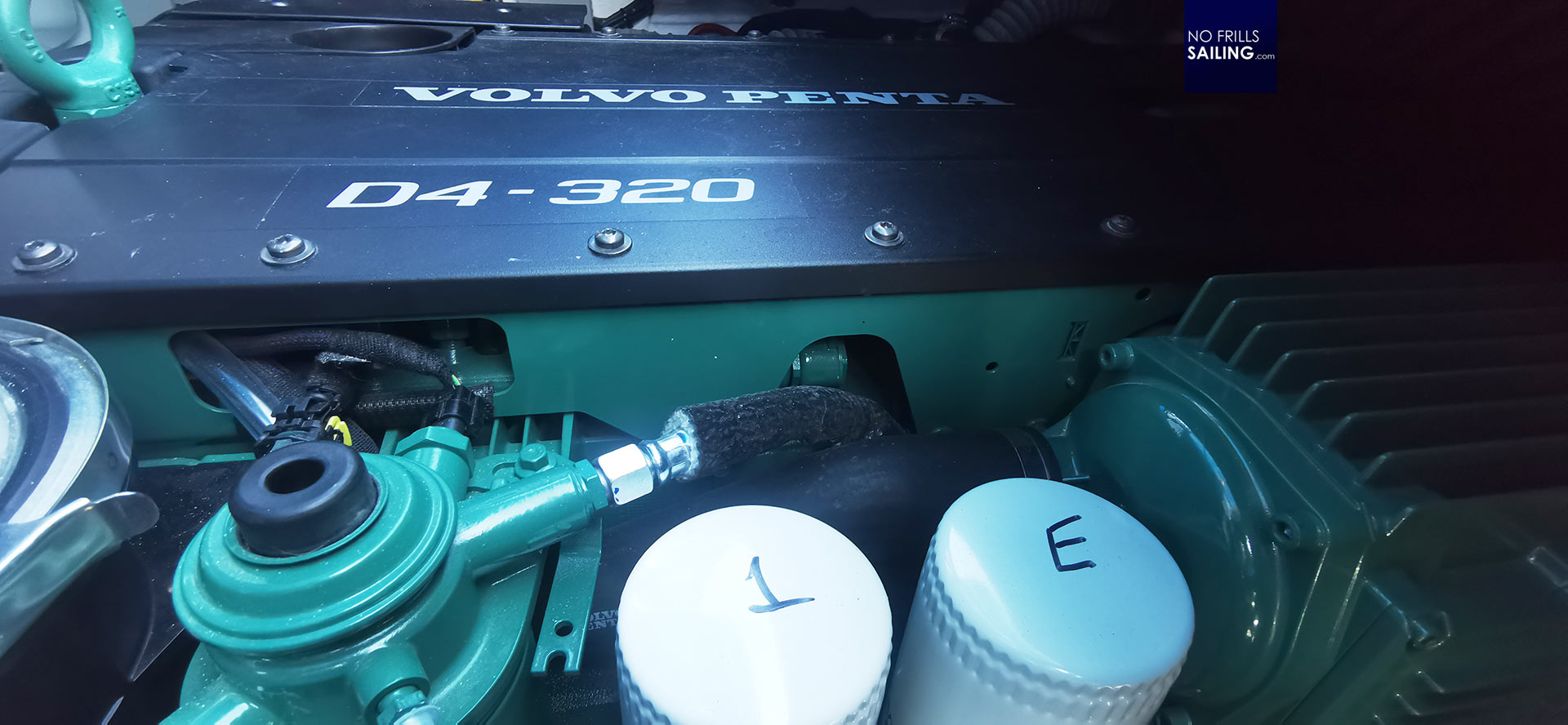
On the other hand, Volvo-Penta, those famous greenish painted engines, could be a nice alternative. I am still impressed with the “old” Volvo-Penta engine my first boat, OLIVIA, had installed. An MD-10, which was running and running and running … without having got any maintenance or care in years. Volvo-Penta is known for a spotless worldwide service-network, which is a big re-assurance for sailors. But also for kind of high prices for spare parts though. All friend I now sailing with such an engine are reporting a carefree usage of those engines: “You can choose any of those two brands at your convenience, both are great!”, says Heiner of the shipyard building my boat. Well, which one then?
Two big names in the industry – two exciting stories
Volvo-Penta is by far the bigger brand and I´d consider the Swedish company being market leader in the boating industry. Their history dates back as far as over 100 years. The Swedish company started as a cast-iron workshop and specialized in machinery. The first ever produced engine was the “Penta B1” and as the legend goes, the Greek word for “five” – “penta” – was used because the group ordering that engine consisted of five men. In 1919, now an engine producing company, they changed their brand to “Pentaverken” and already had sold over 3.000 engines to boat owners.

In 1925 they received the first order from Swedish carmaker Volvo, who later, in 1935, took over Penta. Volvo-Penta was born. Now Volvo-Penta is undeniably the market leader for marine engines, inventor or the famous IPS-drive used in power boats. But also, many of the engines aren´t produced by the company any more but are made by German Deutz AG, Mercury Marine, Kubota or Perkins. This is a bit odd, but in a globalized economy shouldn´t make to many eyebrows go up. As for Yanmar, the company´s history is equally interesting: Founded in Japan in the year 1912, the company specialized and focused on small Diesel engines for boats, use in agriculture or construction as well as for generators. The company makes Gas-turbines since the late Eighties and one of their factory plants in Japan currently has an output of up to 400.000 Diesel engines per year. Well, that´s impressive!
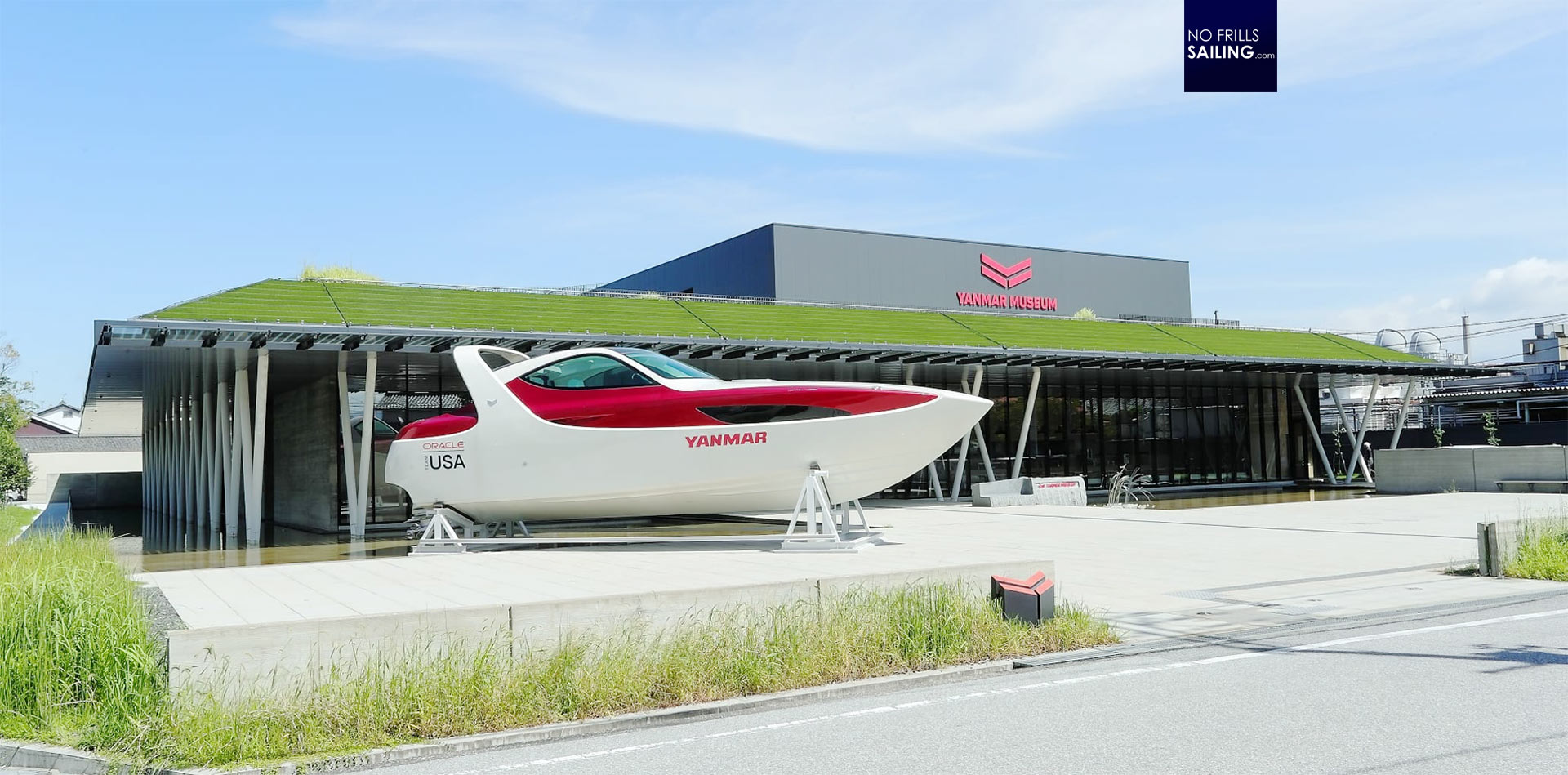
So, here we have two big brands with a worldwide presence. Trusted names and products which last and live up not just to the stated standards but also, if asking around in the sailing community, mostly to the demands and expectations of boat owners. I would agree to shipyard boss Heiner: Which one you choose should more or less be a choice solely based on personal preference as the quality of bth products is not really distinguishable from each other.
Spare Parts & Service
Which brings us to the spare parts and maintenance part. Of course, an engine is subject to wear and tear, so at least for the most common parts like filters, drive belts, impellers and such a number of those should be at hand in the boat at any given time. I must say I cannot remember a single instance, also not in our company, where we´ve had a serious problem with an engine. Of course, maintenance intervals as stated in the handbook should be respected, the life of the Diesel engine therefore prolonged to … well, dozens of years, I guess.
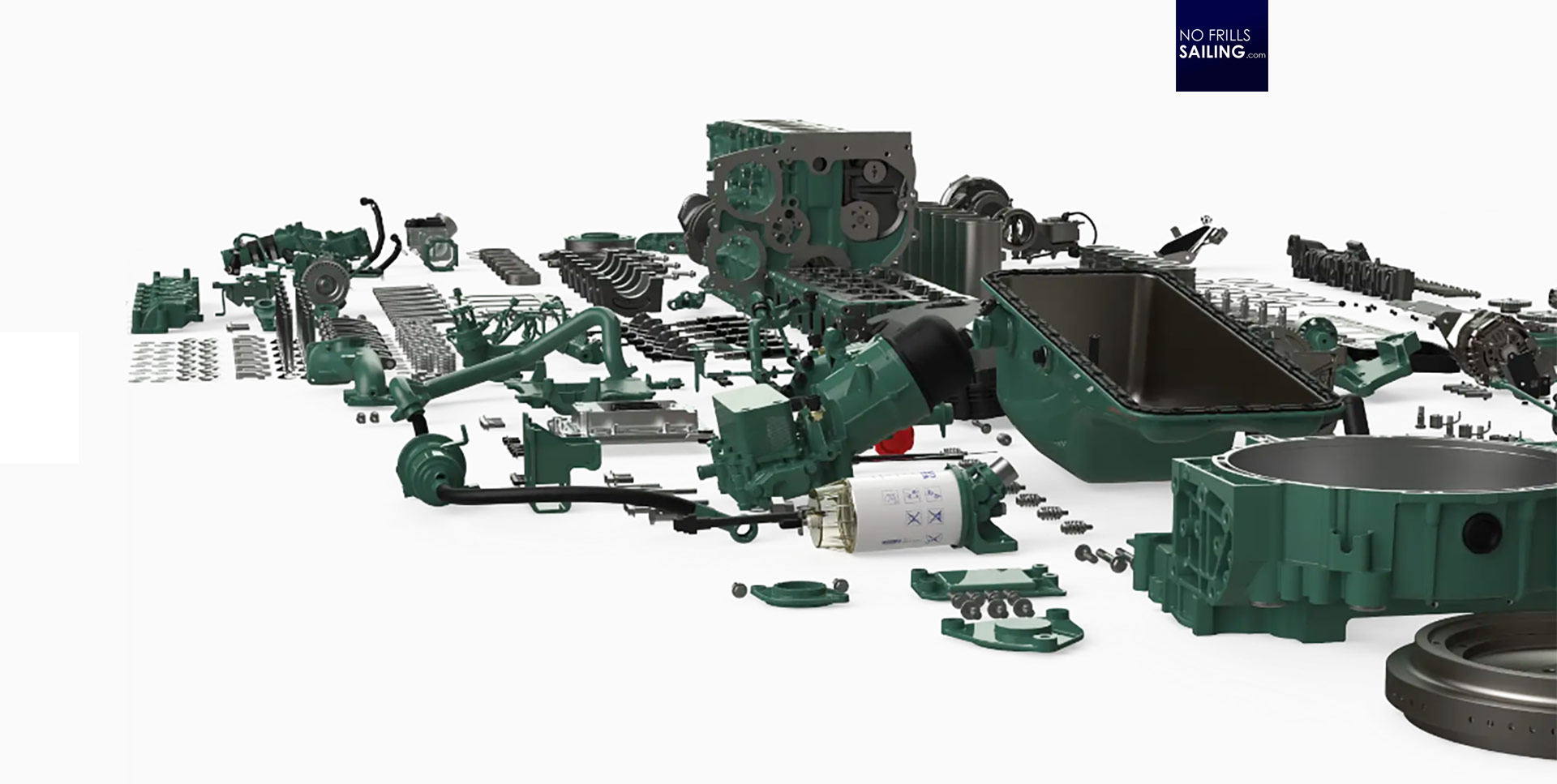
Yanmar is said to have a thinner service-system than Volvo-Penta, which I cannot deny nor confirm. Volvo-Penta is said to have higher spare part pricing, which is also a detail I cannot comment on: I guess it´s the same with everything connected to “jetty talk”: You ask 10 people and you´ll receive 10 stories. For my decision, therefore, the end pricing of the setup engine plus sail drive plus surplus equipment (like the GRP fundament) will be decisive in the end.
(Maybe) A much more important question: The ship´s propeller
Of course the answer to my question of which brand and product I go for is a crucial one, since the budget will be around 15.000 Euros for a 30 horsepower engine. But a much more important question is the choice for the propeller. A fixed blade propeller or a folding prop? Both have their pros and cons. A fixed blade propeller has a much higher efficiency and will push the boat more powerful – for a big boat like the Omega 42 without any help by a bow thruster this might seem a good idea.
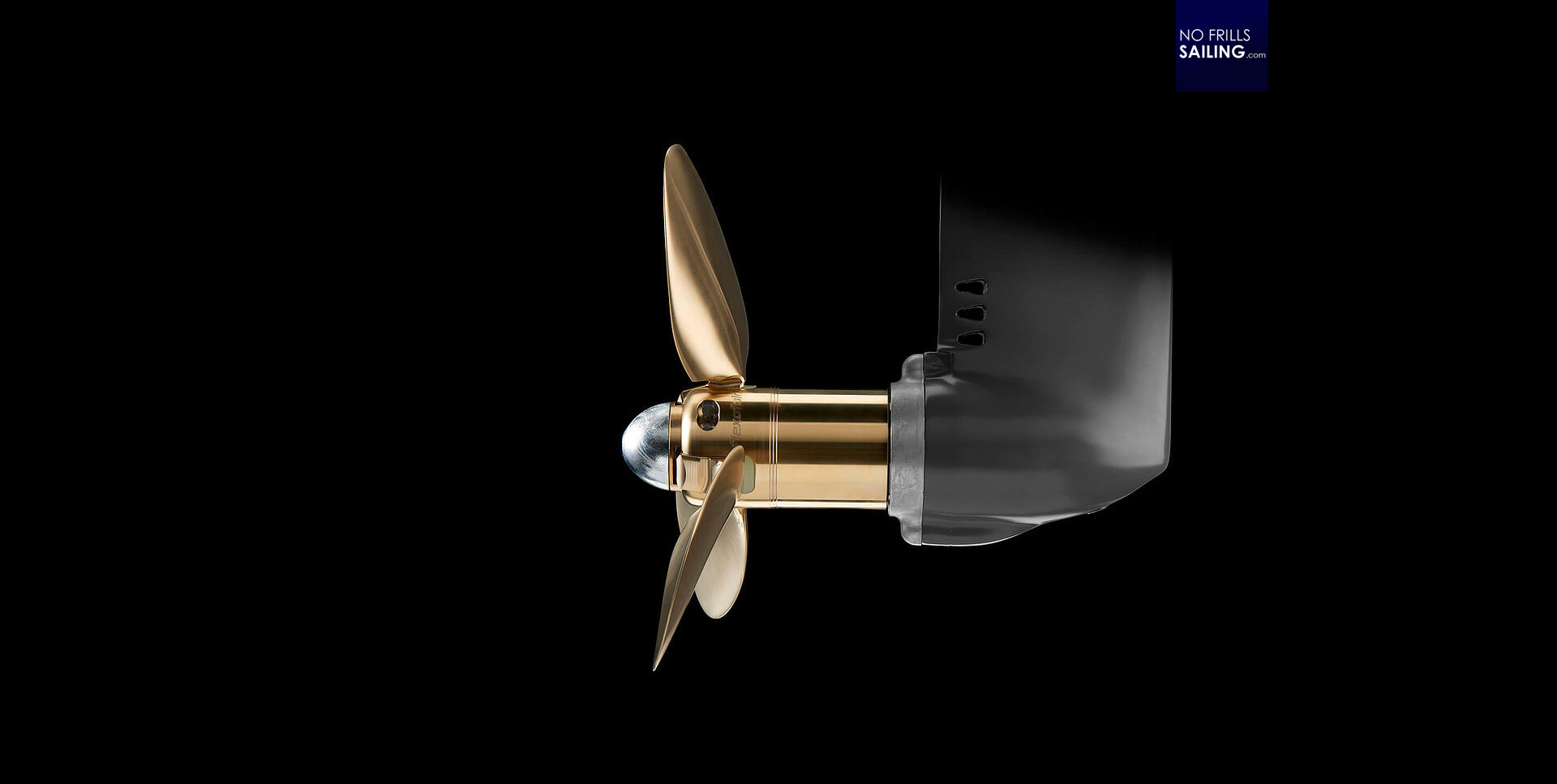
A folding propeller on the other hand improves hydrodynamics significantly, which is a vital aspect on a sailboat. I also don´t like the humming sound of a prop in idle that is constantly turning when sailing. Especially during night sailing this can be so enervating for people trying to catch some sleep. But, also, a folding prop must be check upon constantly, does not have the same efficient pitch as a fixed one. So here´s a much more important decision to take. Well, I´ll dive deeper into this for sure. For now – which engine would you choose. And why? Looking forward to your comments.
You may as well find interesting:
First time sailing the Omega 42
The napping Princess
